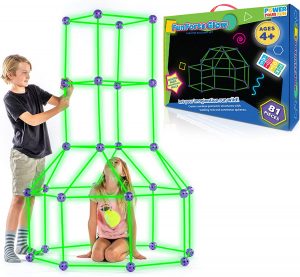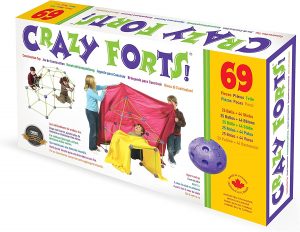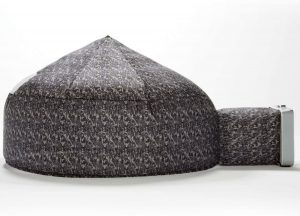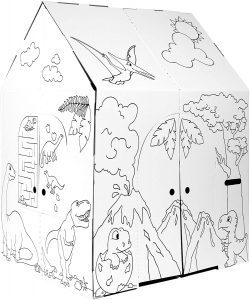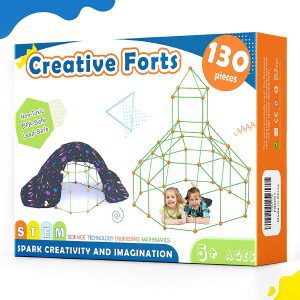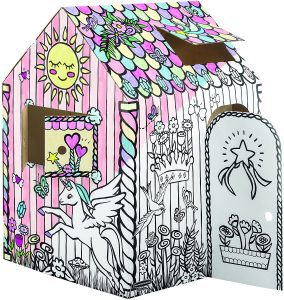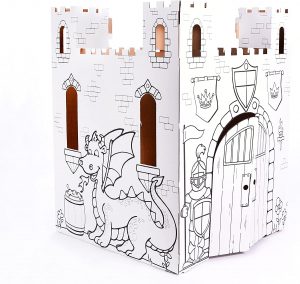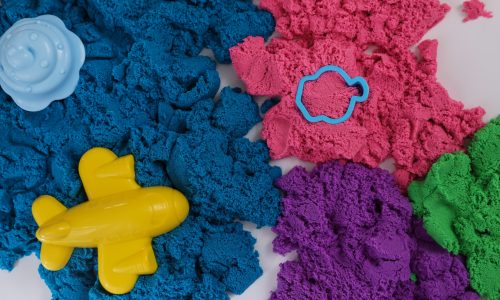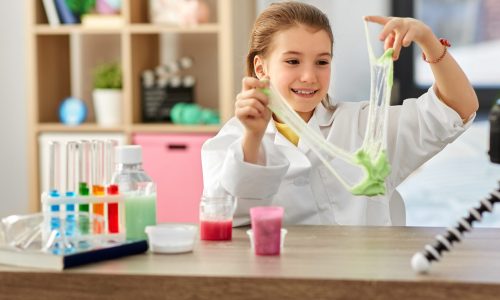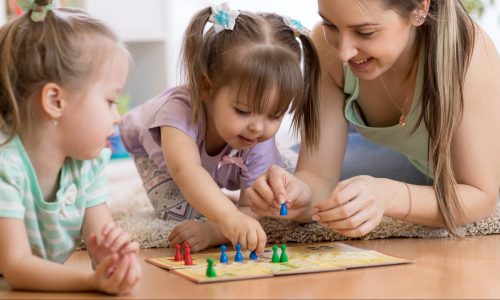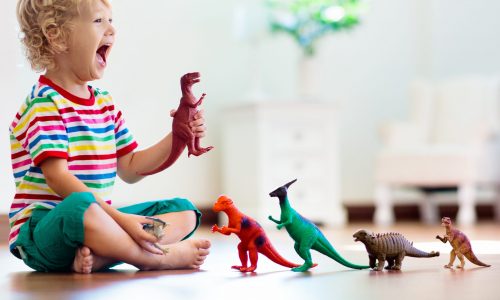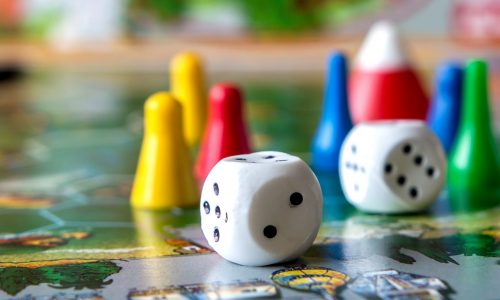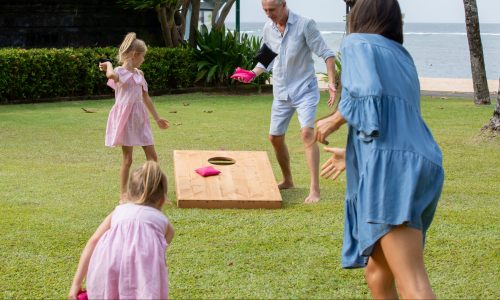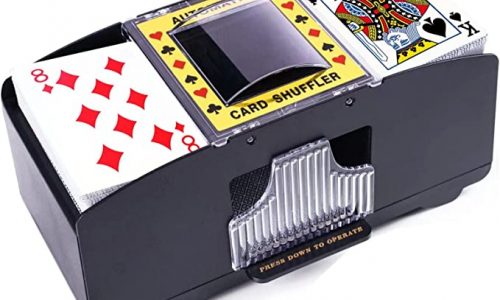The Best Kids’ Fort
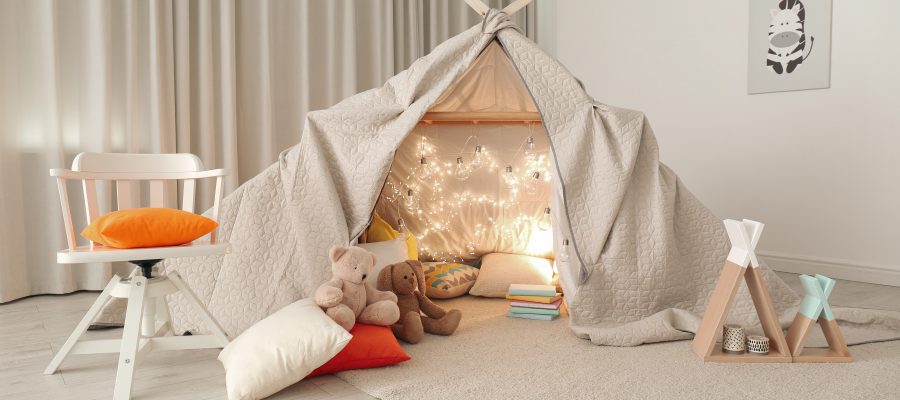
Our Review Process
Don't Waste Your Money is focused on helping you make the best purchasing decision. Our team of experts spends hundreds of hours analyzing, testing, and researching products so you don't have to. Learn more.
Our Picks For The Top Kids' Forts
- 1. POWER YOUR FUN Engineering Connect-And-Build Kids’ Fort
- 2. Crazy Forts Creative Thinking Team Building Kids’ Fort
- 3. AIR FORT Inflatable Polyester Kids’ Fort
- 4. Tiny Land BPA-Free Family Fun Kids’ Fort
- 5. Easy Playhouse Cardboard Color & Decorate Kids’ Dinosaur Fort
- 6. Bankers Box Corrugated Paper Color & Decorate Kids’ Unicorn Fort
- 7. Easy Playhouse Playtime Cardboard Color Kids’ Castle Fort
If building a kids' fort wasn't cool enough, how about an option that glows in the dark? This kit includes a total of 81 pieces that light up neon green when the sun goes down. Multiple configurations are possible, allowing for creativity and repeated use.
Affordable OptionThe budget-friendly price tag on this kids' fort makes it ideal for gift giving.
With this kids' fort set, little ones can create everything from a puppet stand to a circus tent. The 44 sticks and 25 balls are thick and durable and easy for small hands to connect. All you need are a few sheets or blankets and you're good to go!
Lots of ConfigurationsThis kids' fort is best for children ages 5 and up.
This kids' fort only takes seconds to set up. With a 77 inch-wide space that's 50 inches tall, it can fit several children and adults inside. The fort is made from a breathable and lightweight polyester fabric and comes with a matching storage bag.
Quick SetupYou can put up this fun, lightweight, mess-free inflatable kids' fort in seconds.
This durable cardboard kids' fort stands more than 3 feet fall and is easy to assemble. Kids can personalize the fort, which has closeable doors and windows, by coloring in the pictures on the walls and showing their creativity. Use it indoors or out.
Creative FunKids can color their easy-assemble dinosaur playhouse however they like.
Buying Guide
Kids of all ages enjoy imaginative play. Whether they are pretending to have a tea party with the queen or fighting a battle against a scary monster, they draw from countless creative ideas for their games. You can spur their play with a kids’ fort — a small sanctuary that offers enough space for a couple of children.
Forts can be homemade, simply put together from cardboard boxes leftover from parents’ purchases along with piles of cushions or bedsheets. Or, they can be fancier, constructed from actual building materials that require adult help. You can also buy a fort, or you can purchase kits that help your children create and decorate their own little child-size space.
Kids get many learning and developmental benefits from building forts. To start with, the process can improve cognitive skills such as problem-solving and planning. For example, they may draw up plans but then must figure out what to do when part of the fort crumbles. Kids can also develop personal skills, such as independence and confidence, while learning how to do things on their own instead of relying on a parent.
Another major benefit of playing with forts is that the activity may involve more than one child. Siblings, neighbors or friends may come together to build and play in the fort. This encourages kids to work on their social skills as well as their communication abilities. Younger ones can work on their speech by asking for their friends to pass them a cushion, for example. Older children can hone their negotiation skills, as when a friend wants to follow a different fort design..
What to Look For
- The size of fort your kids will need will depend on a number of factors, such as how big the kids are and how many kids will be playing in the fort at one time. For example, taller kids will need a fort that has higher walls than shorter kids.
- Versatility is important for any kind of toy that is used in imaginative play. Can a fort building set create both a castle or a school? Can it be a bunker or a secret hideout? See how flexible the kids’ fort is and whether it can be used to fashion multiple types of structures.
- Consider any unique features your kids may enjoy. For example, will they prefer solid walls or would they like to have a view with a window? Do they want a door they can walk in or a tunnel entrance? How about a mail slot for letters from mom? These types of features enhance their imaginative play.
- From a parent’s perspective, storage is of the utmost importance. How can the kids’ fort be stored when it is not in use? Is it possible to deconstruct and dismantle it easily or does it need to stay fixed in place? Can it be compressed into a small package and put away on a shelf or is it permanently on display in your living room?
- Consider what types of activities the kids’ fort encourages. For kids that love arts and crafts, get a fort with pictures that can be colored with markers, crayons or even paints. Meanwhile, kids that are engineering-inclined may prefer a fort that requires construction using different parts, like rods and balls.
More to Explore
There are many activities kids can do in forts. If they love stuffed animals or dolls, one way to play with them in the fort is to set up an elaborate sleepover for their toys. Kids can get blankets and pillows, sleeping bags, snacks and books to read to their stuffies. They can do quiet activities in there like coloring or building with Legos. A fort is also a great place to set up a base during a dart gun fight or for a spy mission.
Some kids need the sanctuary of the fort because it provides them with a safe space that is all theirs, especially when families are cooped up together because of weather, illness or other causes. Experts say that forts are an important, universal part of childhood that allows young people to build a sense of self, make sense of the world and feel in control of something. A fort can help regulate emotions, as it buffers sounds and textures for them, too. Kids start building in-home versions at age 4, and then venture outdoors starting at age 6 or 7.

